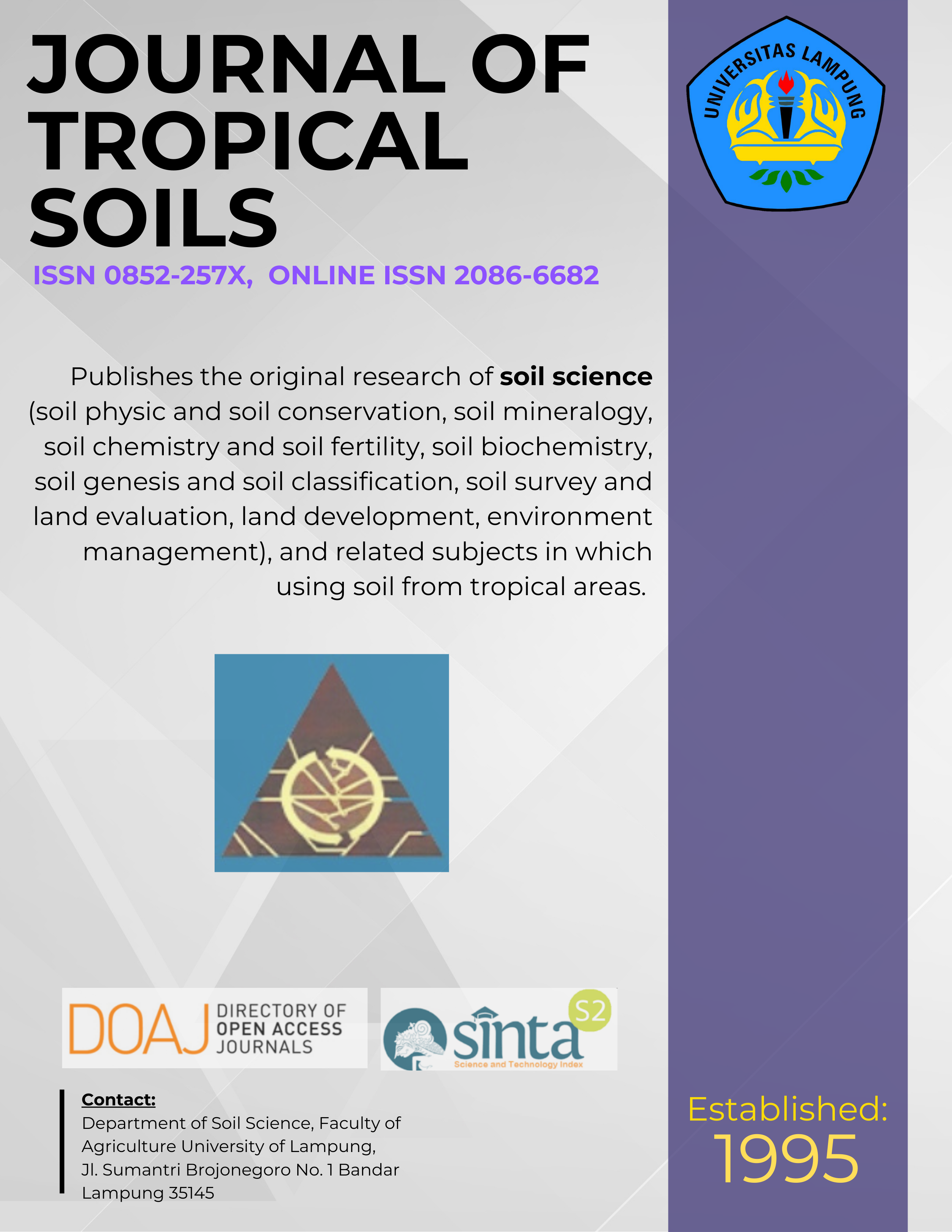The Nutrient Uptake Efficiency, Crop Productivity and Quality of Rice Bean in Dry Land
Main Article Content
Abstract
Rice bean is a group of beans that are rich in carbohydrates, proteins and fats. This plant is resistant to pests and diseases, as well as the broad adaptability. This study aims to obtain an efficient fertilization pattern on rice bean cultivation in dry land. The treatments consisted of 9 fertilization patterns which were RP0: no fertilizer (control); RP1: 100% recommendation fertilizer (50 kg Urea and 100 kg SP-36 ha-1); RP2: 5 Mg ha-1 manure plus 50% recommendation fertilizer; RP3: RP2 plus MVA; RP4: 5 Mg ha-1 Crotalaria sp compost plus 50% recommendation fertilizer; RP5: RP4 plus VAM; RP6: 2.5 t ha-1 manure, 2.5 Mg ha-1 Crotalaria sp compost plus 50% recommendation fertilizer; RP7: 1.5 Mg ha-1 manure, 1 Mg ha-1 Crotalaria sp compost plus 50% recommendation fertilizer; RP8: RP7 plus MVA. Fertilization treatments were arranged in RCBD and each treatment was repeated 3 times. The fertilization treatments had no significant effect on NUE. Productivity of rice bean in RP3 and RP5 reached 3.75 Mg ha-1, in RP2 and RP4 achieved 2.64 Mg ha-1, and in the control treatment reached 1.94 Mg ha-1. Carbohydrate content in seeds increased by 20% in the fertilization treatments compared to the control. Protein and anthocyanin content in all treatments were not significantly different. The combination of 5 Mg organic fertilizer (manure and / or Crotalaria compost), 50% recommendation fertilizer plus MVA was an efficient fertilization pattern to improve P fertilizer uptake efficiency (PUE), productivity and quality of rice bean crop in dry land.
[How to Cite: Lolita ES, UM Yakop, L Ujianto, and B Hari Kusumo. 2015. The Nutrient Uptake Efficiency, Crop Productivity and Quality of Rice Bean in Dry Land. J Trop Soils 19: 1-9. Doi: 10.5400/jts.2015.20.1.1]
[Permalink/DOI: www.dx.doi.org/10.5400/jts.2015.20.1.1]
Downloads
Article Details
Section
License for Authors
Authors who publish with this journal agree to the following terms:
- Authors retain copyright and grant the journal right of first publication with the work simultaneously licensed under a Creative Commons Attribution License that allows others to share the work with an acknowledgement of the work's authorship and initial publication in this journal.
- Authors are able to enter into separate, additional contractual arrangements for the non-exclusive distribution of the journal's published version of the work (e.g., post it to an institutional repository or publish it in a book), with an acknowledgement of its initial publication in this journal.
- Authors are permitted and encouraged to post their work online (e.g., in institutional repositories or on their website) prior to and during the submission process, as it can lead to productive exchanges, as well as earlier and greater citation of published work (See The Effect of Open Access).
License for Regular Users
Other regular users who want to cite, distribute, remix, tweak, and build upon author’s works, even for commercial purposes, should acknowledge the work’s authorship and initial publication in this journal, licensed under a Creative Commons Attribution License.

